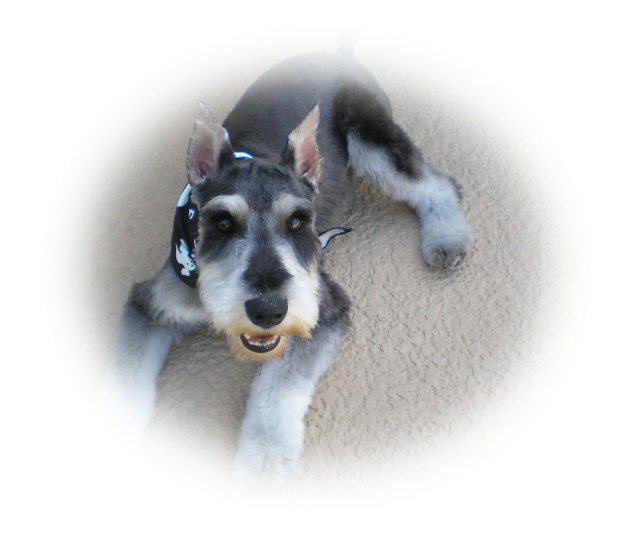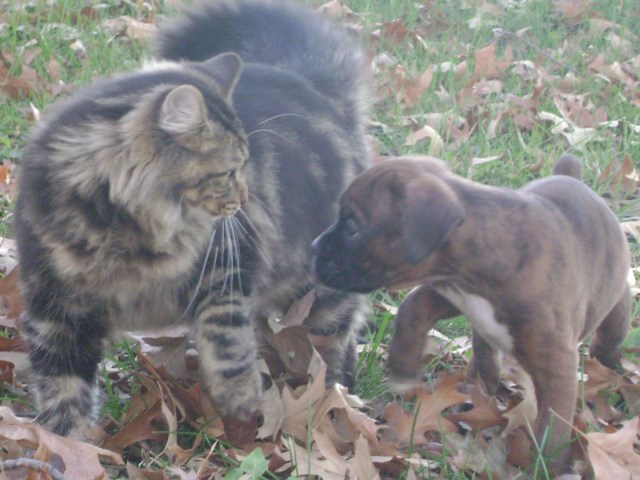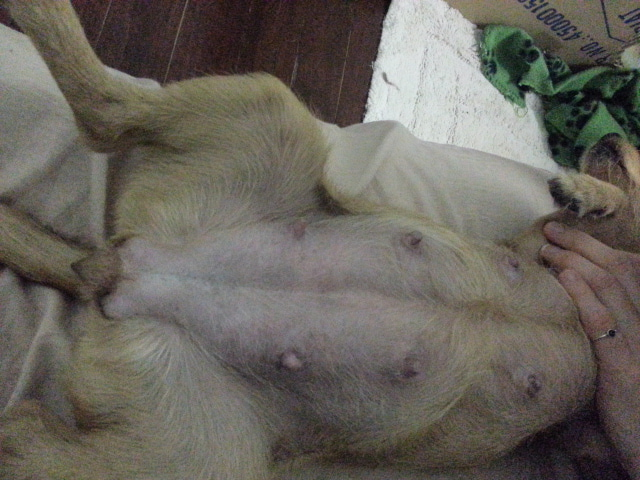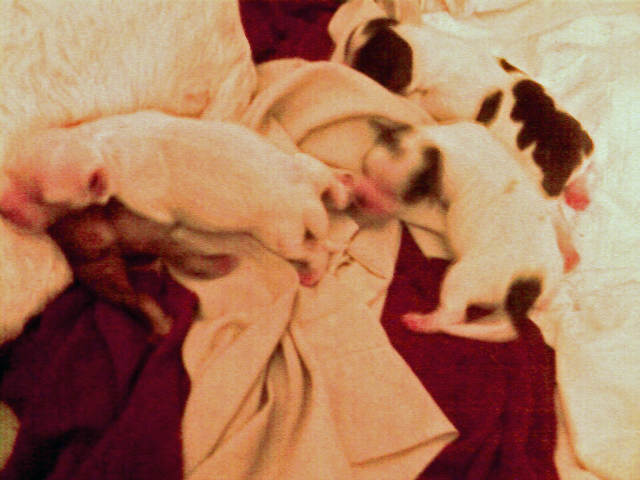QuestionWe have a 3 year old Mini-schnauzer that is very sensitive about his feet. Whenever we touch his feet, he snips at us. If we try to hold on to his feet (to cut his toenails), he will bite us.
We figure that he probably had a bad experience getting his toenails cut in the past but we are looking for a way to desensitize him about people touching his feet.
We have tried giving treats, massaging and talking calmly around him while touching his feet but nothing has helped. He has a good range of commands and is really obedient except for this issue.
Please let us know if you have anything else we can try. We have a toddler so we want to get this corrected before we have an issue.
AnswerMy mother-in-law's mini schnauzer is the same way, Brian.
You want to get him used to having hs feet touched slowly and gently. Start out by not even touching his feet at all. Just show him the clippers and give him a treat. Then put the clippers away. Repeat as often as you want, until he's happy to see the clippers! Then, show him the clippers and reach towards his foot, touching it if you can, before giving him a treat. Repeat. Next step, pick up his foot in the palm of your hand before treating him. Repeat. Then, close your fingers around his foot as you would have to hold it to clip the nails. Repeat. Manipulate his toes and treat. Repeat. At this stage, start touching his foot with the clippers and treat. Repeat. Put the clippers on the nail but don't cut it, and treat. Repeat. Finally, cut a nail and treat. Repeat.
If he growls, snaps, bites, etc. you want to be able to firmly correct him, so that he knows that that behavior is unacceptible. Whatever you do, DON'T RETREAT if he does show aggression, because that will only teach him that if he growls, snaps, etc., you will stop. You may get bitten, but if you quit when he bites, that will only encourage the behavior. If he learns that biting doesn't make you stop or go away, he will eventually stop. If you're worried about getting hurt, then get some bandages (like what they use to wrap a horse's legs) and wrap your hand and wrist in that. IF the dog bites, the bandages will keep it from being quite so bad. Anyway, back to the point, you will need a way to correct him if he does bite. I suggest you go out and get a size small prong collar (I like the kind that Superpetz sells better than the ones at PetsMart with the "quick release" because they fit better and the tips of the prongs are more rounded). Make sure the collar fits as shown on the following web page:
http://www.leerburg.com/fit-prong.htm
Don't worry; this type of collar is not harmful or dangerous. It's actually safer and easier to use than traditional choke collars because it distributes the correction evenly all the way around the neck and simulates the way dogs correct one another. The collar does not work by poking into the dog's neck, but rather pinching the skin. When the collar is tightened, the prongs are drawn inwards towards each other, causing a pinching sensation (which is why they are also called pinch collars). If you're worried about the prongs irritating your dog's neck, you can buy the vinyl tips that go over the ends of them.
Put the collar on the dog at least 15 minutes before you start doing anything. Hook a short leash or piece of rope (1 foot or so long) to the live ring of the collar. As soon as the dog growls, shows his teeth, tries to snap, etc. you should immediately say "NO" in a firm tone of voice and give a quick jerk on the leash. The jerk should be just hard enough to make him stop the behavior, but not so hard that he 'shuts down.' Same as if you were using a choke chain, but because this type of collar is designed to evenly distribute the correction, you should not have to jerk nearly as hard on it to get the same effect as yanking more forcefully on a choke chain. Immediately following the correction, PRAISE THE DOG because at that point he will not be showing signs of aggression. He needs to know what caused the correction, so by correcting as soon as he shows aggression and praising immediately following, he should quickly make the association.
Good luck and please let me know if there's anything I need to elaborate on or anything else I can help you with.
Kristen

 chihuahua pees on bed
Questionme and boo
QUESTION: I have a 9 month ol
chihuahua pees on bed
Questionme and boo
QUESTION: I have a 9 month ol
 mini-schnauzer limping not able to put full weight on leg
Question
Willy
A couple of hours ago, I walked my 14mon
mini-schnauzer limping not able to put full weight on leg
Question
Willy
A couple of hours ago, I walked my 14mon
 Puppy wont come!
QuestionCapone & Rascal
QUESTION: Help! &nbs
Puppy wont come!
QuestionCapone & Rascal
QUESTION: Help! &nbs
 high temp tummy
Question
swollen nipples?
My two year old Jack R
high temp tummy
Question
swollen nipples?
My two year old Jack R
 worried about mom dog not lactating enough
Question
angel and her pups jus
I have a small mixed br
worried about mom dog not lactating enough
Question
angel and her pups jus
I have a small mixed br